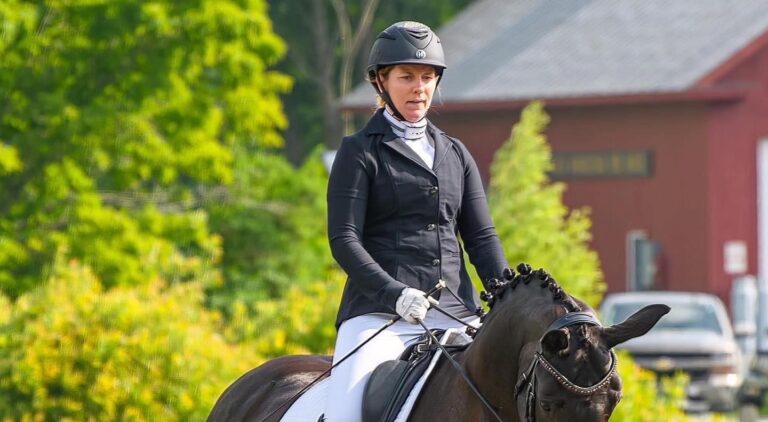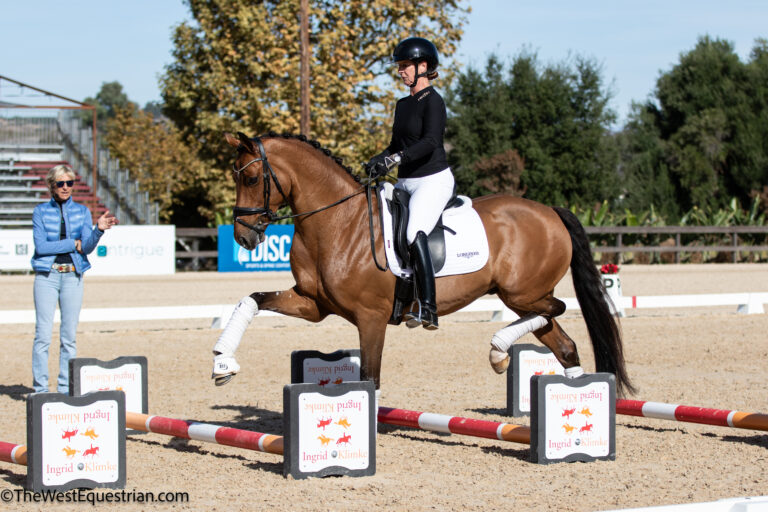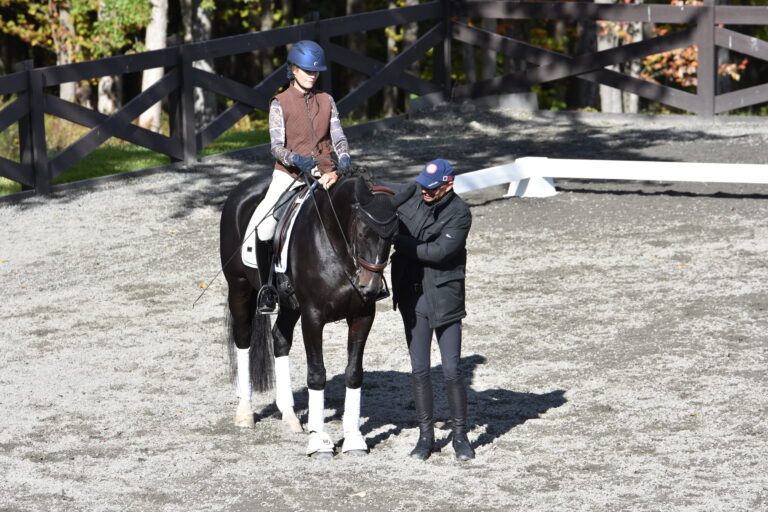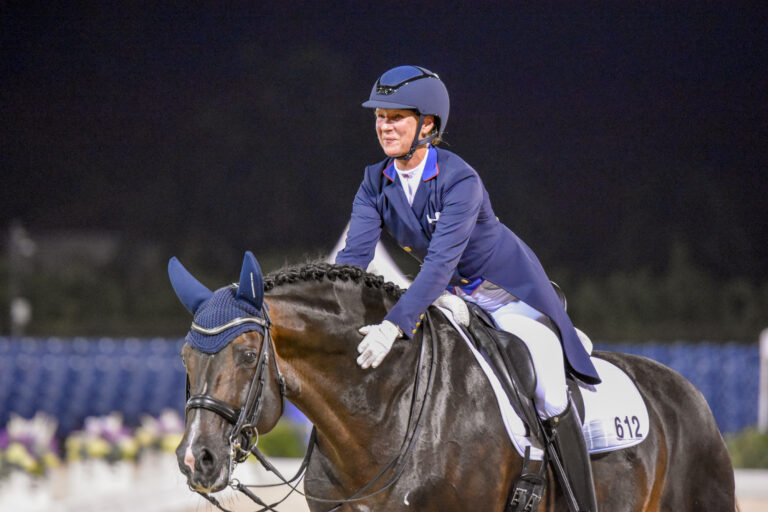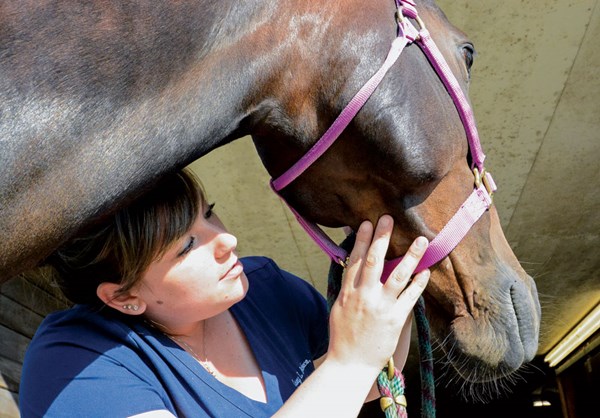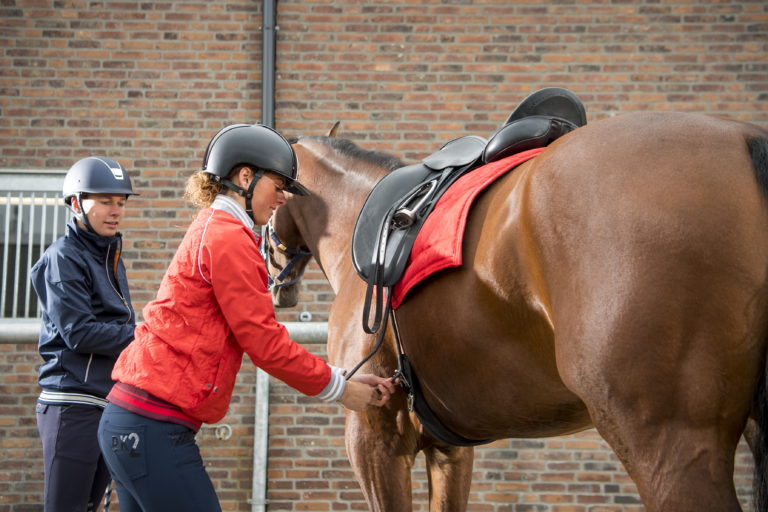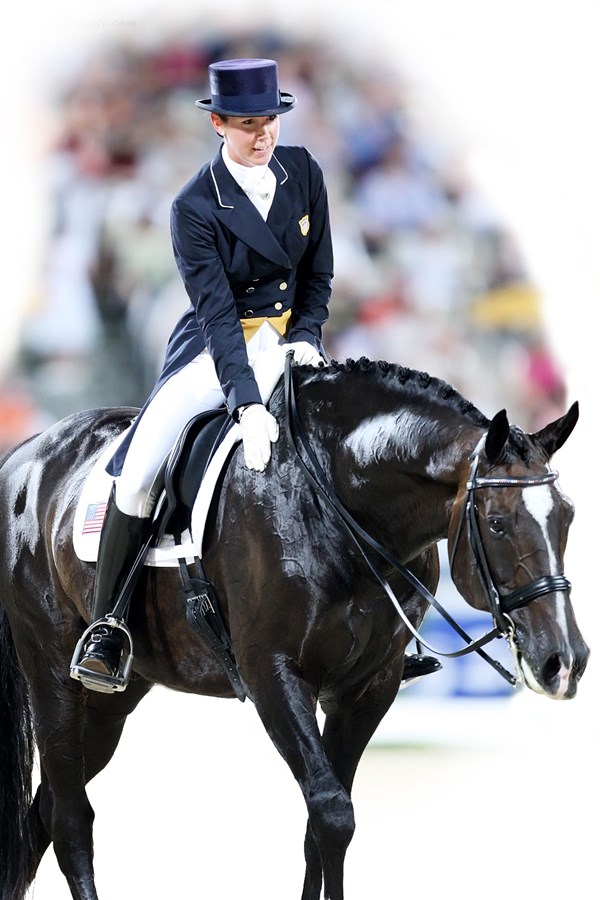
Too often I see riders dependent on the whip. In the beginning years, the whip should only be used as a correction for ignoring the leg; it simply means go, now. At this point I don’t use the whip as a gentle reminder, but as, “Fwack, listen!” Lightning strikes and then is completely gone, instead of tapping, then tapping a little harder, then a little harder like a sort of crescendo. When it’s an aid to GO, it should be used seriously then disappear.
Using the whip becomes more complex as you progress. As the horse begins collection, the whip can be used to increase collection, to keep the hind end going while we slow the front end down. For instance, in going from extended canter to collected canter, I often use it while I am collecting. Now, if we’ve done our previous whip work correctly, the horse has learned not to be dead to the whip. He is sensitive to it; so now it’s not a whack; it’s a gentle tap, tap in the rhythm of the strides. It’s used as just a little reminder to keep their hind legs active while shortening the front end. In teaching, I’ve found it very useful to have students do this in both trot and canter when it’s not natural for them to keep the hind leg going when they want to slow down. In the canter, make sure to use it on the outside.
This is the same philosophy I engage when teaching piaffe. It’s not used to keep the horse piaffing. I never try to keep piaffing in training. If the horse stops, lightning strikes; I whack them even accepting a gallop forward or buck (anything forward is the reaction I want). Then I resume piaffing with no help from the leg or whip. I only use the whip lightly when showing the horse the rhythm as they’re first learning, not to keep them going. Some horses are always slower with one leg, so make sure to put the whip in the hand over that leg.
One thing that was hard for me to learn was the correct timing. Our natural instinct is to tap the leg we want more activity from when that leg comes up. In actuality, that will only encourage the horse to put that leg down quickly, hence lessoning activity. We really want to touch the horse just before that leg starts to come up to encourage that leg to come up higher and hence stay up longer.
If you have trouble getting the right timing, have someone on the ground say, “now” every time your horse is about to pick that leg up, “now … now … now.” This helps because it takes a moment for your body to tell your brain now and then for your brain to tell your body now. Having someone tell you eliminates one message from having to travel, so your timing has a better chance of being accurate and soon your body will just know the timing and it will be ingrained enough to eliminate the need for the messages to travel to your brain and back. Your body will develop direct communication with the horse.
I think many people ride with two whips before they’re ready. This method is used to encourage each leg, which has to be done individually. The timing has to be perfect. If the timing is not spot on, in the long run it’s counter productive. The purpose is to teach the horse the correct rhythm, not to scare them into being more active.
Remember, our goal is to be able to do everything without the whip. It should be used for two reasons: To teach the horse that he must listen to and respect the leg, and to teach him the rhythm and carriage that our leg is unable to do. It should never be relied upon. There’s a reason we aren’t allowed to carry one in international competition.
Courtney King-Dye represented the United States at the 2008 Olympic Games riding Harmony’s Mythilus and at two World Cups riding Idocus. She is a U.S. Dressage Federation (USDF) Certified Instructor through Fourth Level and USDF gold medalist (ckddressage.com).


